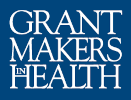Upcoming Events
Philanthropy’s Role in Protecting Public Health
In recent months, negative sentiment and rhetoric against our country’s public health system has led to a variety of policy decisions, ranging from defunding local public health departments to undercutting and dismantling key systems and infrastructure. These actions will have profound and far-reaching consequences for our nation’s health. Join this call to discuss the impact of recent state and federal actions on local health departments, how health funders are investing in their communities’ public health, and what grantmakers can do to protect public health. Speakers include Lori Freeman of National Association of County & City Health Officials, Avital Havusha of New York Health Foundation, and Brian Williams of Missouri Foundation for Health.
Roundtable Discussion for Health Funders’ Policy Staff
A growing number of health funders employ staff whose responsibilities focus exclusively or predominantly on public policy engagement. Do you lead your organization’s policy or government affairs work? Join this informal roundtable discussion to connect with your peers, explore pressing issues, and share your experiences to engage communities in setting funders’ policy priorities.
On this webinar, we will hear from Sean McCluskie, Former Chief of Staff at the US Department of Health and Human Services (HHS), regarding his reflections on the current health policy environment, as well as his advice for funders engaging in policy.
CEO Working Group Webinar
Grantmakers In Health is pleased to convene the CEO Working Group to discuss challenges in our work and opportunities for collaboration as we move forward to achieve our health missions under the new administration.
Roundtable Discussion for Health Funders’ Policy Staff
A growing number of health funders employ staff whose responsibilities focus exclusively or predominantly on public policy engagement. Do you lead your organization’s policy or government affairs work? Participants joined this informal roundtable discussion to connect with your peers, explore pressing issues, and share your experiences to engage communities in setting funders’ policy priorities. Agenda forthcoming.
One Year Later: Medicaid Enrollment After the End of the Public Health Emergency
Participants joined this webinar to hear about the status of Medicaid enrollment one year after the public health emergency ended.
Responsible and Equitable Use of Artificial Intelligence by Foundations
Participants joined this discussion to learn about the collaborative process that resulted in this first version of the framework and to gain a deeper understanding of the framework’s design principles and how they foster equity, transparency, and responsible AI adoption.
Advocacy for the Older Americans Act Reauthorization: What Can My 501c 3 Foundation Do?
Participants convened for a workshop that provided a clear understanding of what advocacy activities your 501(c)(3) organization can engage in, what communications count as lobbying, and how to maximize your non-lobbying advocacy.
Roundtable Discussion for Health Funders’ Policy Staff
Join this informal roundtable discussion to connect with your peers, explore pressing issues, and share your experiences collaborating with philanthropic liaisons in state government.
State-based Advocacy for the Public’s Health
Participants joined this informal discussion to learn about the state of public health advocacy, what funders are currently doing to bolster public health advocacy, and what they can do.
